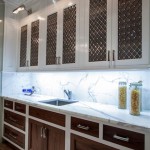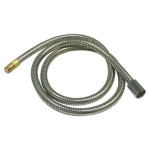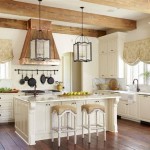Best Sink Material For Kitchen: A Comprehensive Guide
Selecting the appropriate sink material for a kitchen is a crucial decision impacting functionality, aesthetics, and longevity. The market offers a diverse range of materials, each with distinct advantages and disadvantages. This article provides an in-depth analysis of common sink materials, enabling informed decision-making based on individual needs and preferences.
Stainless Steel: The Durable and Versatile Option
Stainless steel remains a prevalent choice for kitchen sinks due to its durability, affordability, and ease of maintenance. This material is resistant to corrosion, staining, and heat, making it well-suited for the demands of a busy kitchen. The non-porous surface also prevents the absorption of bacteria and odors, contributing to a hygienic environment.
The gauge of stainless steel, measured inversely, indicates its thickness and durability. Lower gauge numbers represent thicker steel. For example, 16-gauge stainless steel is thicker and more resistant to dents and scratches than 20-gauge stainless steel. A gauge between 16 and 18 is generally considered optimal for kitchen sinks, balancing durability with affordability.
While stainless steel is generally resistant to scratches, it is not entirely impervious. Water spots and fingerprints can also be visible, requiring regular cleaning to maintain a polished appearance. Sound dampening features are also crucial when selecting a stainless steel sink, as the material can be prone to noise amplification from running water or clanging dishes.
Stainless steel sinks are available in a variety of styles, including single-bowl, double-bowl, and apron-front designs. The finish options, such as brushed, satin, and polished, provide further customization to complement various kitchen aesthetics. Given its versatility and practicality, stainless steel is a reliable choice that satisfies a wide range of needs.
Granite Composite: A Blend of Beauty and Resilience
Granite composite sinks are engineered materials consisting of crushed granite stone and acrylic resins. This combination creates a resilient and visually appealing surface that can withstand the rigors of daily use. The material is highly resistant to heat, scratches, and stains, making it an excellent option for demanding kitchens.
The non-porous nature of granite composite prevents the absorption of liquids and bacteria, promoting hygiene and simplifying cleaning. The material is also less prone to water spots and fingerprints compared to stainless steel. Regular cleaning with mild soap and water is typically sufficient to maintain its appearance.
Granite composite sinks are available in a wide array of colors and styles, providing design versatility. The matte finish offers a sophisticated and contemporary look that complements various countertop materials and kitchen designs. The color is consistent throughout the material, minimizing the visibility of scratches.
While granite composite is generally durable, it can be susceptible to chipping or cracking if subjected to heavy impact. It's also heavier than stainless steel, which may require additional support during installation. Furthermore, the cost of granite composite sinks is generally higher than stainless steel, reflecting the premium materials and manufacturing processes involved.
The composition of granite composite sinks can vary, with some containing a higher percentage of granite than others. A higher granite content typically results in a more durable and heat-resistant sink. Checking the manufacturer's specifications is recommended to ensure the sink meets individual performance requirements.
Fireclay: A Classic and Durable Choice
Fireclay sinks are crafted from clay that is fired at extremely high temperatures, resulting in a dense and durable material. This process vitrifies the clay, creating a non-porous surface that is highly resistant to scratches, stains, and heat. Fireclay sinks are prized for their classic appearance and longevity.
The smooth, glossy surface of fireclay is easy to clean and maintain. It is also resistant to most household chemicals and solvents. Regular cleaning with mild soap and water is typically sufficient to keep the sink looking its best.
Fireclay sinks are available in a variety of styles, including apron-front, undermount, and drop-in designs. The apron-front style, also known as a farmhouse sink, is particularly popular for its vintage charm and functional design. The large, deep basin provides ample space for washing large pots and pans.
Fireclay sinks are relatively heavy, requiring robust cabinet support during installation. The material is also susceptible to chipping if subjected to heavy impact. Minor imperfections, such as slight variations in color or surface texture, are common due to the natural variations inherent in the manufacturing process. These variations are considered part of the material's charm and character.
Fireclay sinks tend to be more expensive than stainless steel and granite composite sinks. This reflects the labor-intensive manufacturing process and the high-quality materials used. Despite the higher cost, the durability and classic aesthetic of fireclay make it a worthwhile investment for many homeowners.
Copper: A Naturally Antimicrobial and Visually Appealing Option
Copper sinks offer a unique combination of aesthetic appeal and antimicrobial properties. Copper is a naturally antimicrobial material, inhibiting the growth of bacteria, viruses, and fungi. This makes it an excellent choice for maintaining a hygienic kitchen environment.
The appearance of copper sinks evolves over time as the metal oxidizes, developing a rich patina. This natural aging process adds character and depth to the sink's appearance. The patina can range from a bright, shiny finish to a dark, antiqued look, depending on the type of copper and the level of maintenance.
Copper sinks are relatively soft and prone to scratching and denting. However, these imperfections often contribute to the sink's overall charm and character. Regular cleaning with a mild soap and water is recommended to maintain its appearance. Avoid using abrasive cleaners or scouring pads, which can damage the patina.
Copper sinks are available in a variety of styles, including hammered, smooth, and apron-front designs. The hammered finish is particularly popular for its rustic and textured appearance. The gauge of copper, similar to stainless steel, indicates its thickness. A lower gauge number represents thicker copper.
The cost of copper sinks can vary depending on the gauge, size, and style. Thicker copper and more intricate designs tend to be more expensive. The antimicrobial properties and unique aesthetic appeal of copper make it a desirable choice for homeowners seeking a distinctive and hygienic kitchen sink.
Cast Iron: Durable with a Classic Enamelled Finish
Cast iron sinks are known for their durability and classic aesthetic, typically featuring an enamel coating that provides a smooth, non-porous surface. The heavy weight of cast iron contributes to its stability and sound-dampening properties.
The enamel coating offers resistance to staining, scratching, and chipping, but it can be susceptible to damage from harsh chemicals or abrasive cleaners. Regular cleaning with mild soap and water is generally sufficient to maintain its appearance. Prompt removal of acidic spills, such as lemon juice or vinegar, is recommended to prevent staining.
Cast iron sinks are available in a variety of colors and styles, allowing for design versatility. The enamel coating can be customized to match various kitchen color schemes. The weight of cast iron requires robust cabinet support during installation.
While the enamel coating is generally durable, it can chip or crack if subjected to heavy impact. Repairing chipped enamel can be challenging and may require professional assistance. The cost of cast iron sinks can vary depending on the size, style, and color. The durability and classic appearance of cast iron make it a popular choice for traditional and transitional kitchens.
Acrylic: Lightweight and Affordable
Acrylic sinks are made from a synthetic plastic material that is lightweight and relatively inexpensive. They are available in a wide range of colors and styles, making them a versatile option for budget-conscious homeowners.
Acrylic sinks are generally resistant to staining and scratching, but they are not as durable as other sink materials, such as stainless steel or granite composite. They are also susceptible to heat damage, so it is important to avoid placing hot pots and pans directly into the sink.
The smooth, non-porous surface of acrylic sinks is easy to clean and maintain. Regular cleaning with mild soap and water is typically sufficient. Avoid using abrasive cleaners or scouring pads, which can scratch the surface.
Acrylic sinks are a budget-friendly option, but their limited durability and heat resistance may make them a less desirable choice for high-use kitchens. They are best suited for lighter-duty applications, such as guest bathrooms or utility sinks.
The manufacturing process of acrylic sinks allows for complex shapes and designs, providing greater design flexibility compared to some other materials. This can make them an attractive option for homeowners seeking a unique or contemporary look.
Key Considerations Summary
Choosing the best sink material is a multifaceted process that requires careful consideration of various factors. The durability, aesthetic, and price all play a significant role in the decision. Stainless steel offers a balance of durability and affordability, while granite composite provides a more premium look and feel. Fireclay offers classic charm and long-lasting performance. Copper offers antimicrobial benefits and visual appeal, and cast iron provides durability with a classic enameled finish. Acrylic sinks are a budget-friendly option but sacrifice some durability.
Beyond the material, the sink's size, shape, and configuration (single-bowl, double-bowl, etc.) should also align with individual needs and kitchen workflow. Proper installation is crucial, regardless of the chosen material, to ensure leak-free performance and prevent damage to the sink or surrounding cabinetry.
By understanding the strengths and weaknesses of each material and carefully evaluating individual needs, homeowners can make an informed decision and select the best sink material for their kitchen.

How To Choose The Best Material For Your Kitchen Sink Tap Warehouse

Top 5 Kitchen Sink Materials Sinkology
14 Best Kitchen Sink Materials For Ultimate Durability Style Vevano

Top 5 Kitchen Sink Materials Sinkology

9 Best Kitchen Sink Materials Pros Cons

How To Choose The Best Material For Your Kitchen Sink Tap Warehouse

What Kitchen Sink Material Is Best Trading

Guide To Choosing The Best Kitchen Sink Material

Choosing Kitchen Sinks Which Material Is Best

Which Kitchen Sink Material Is Best Stonecover Quartz Surfaces








